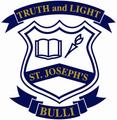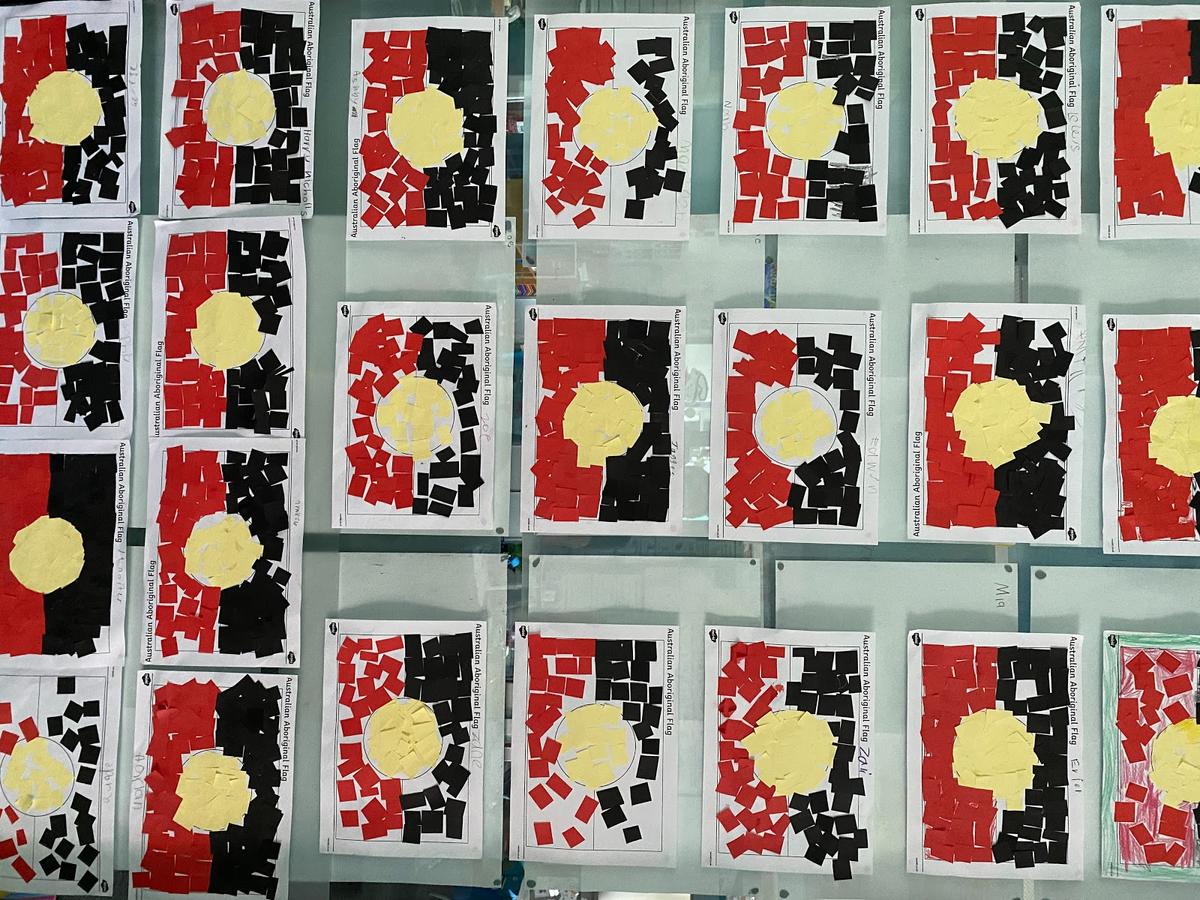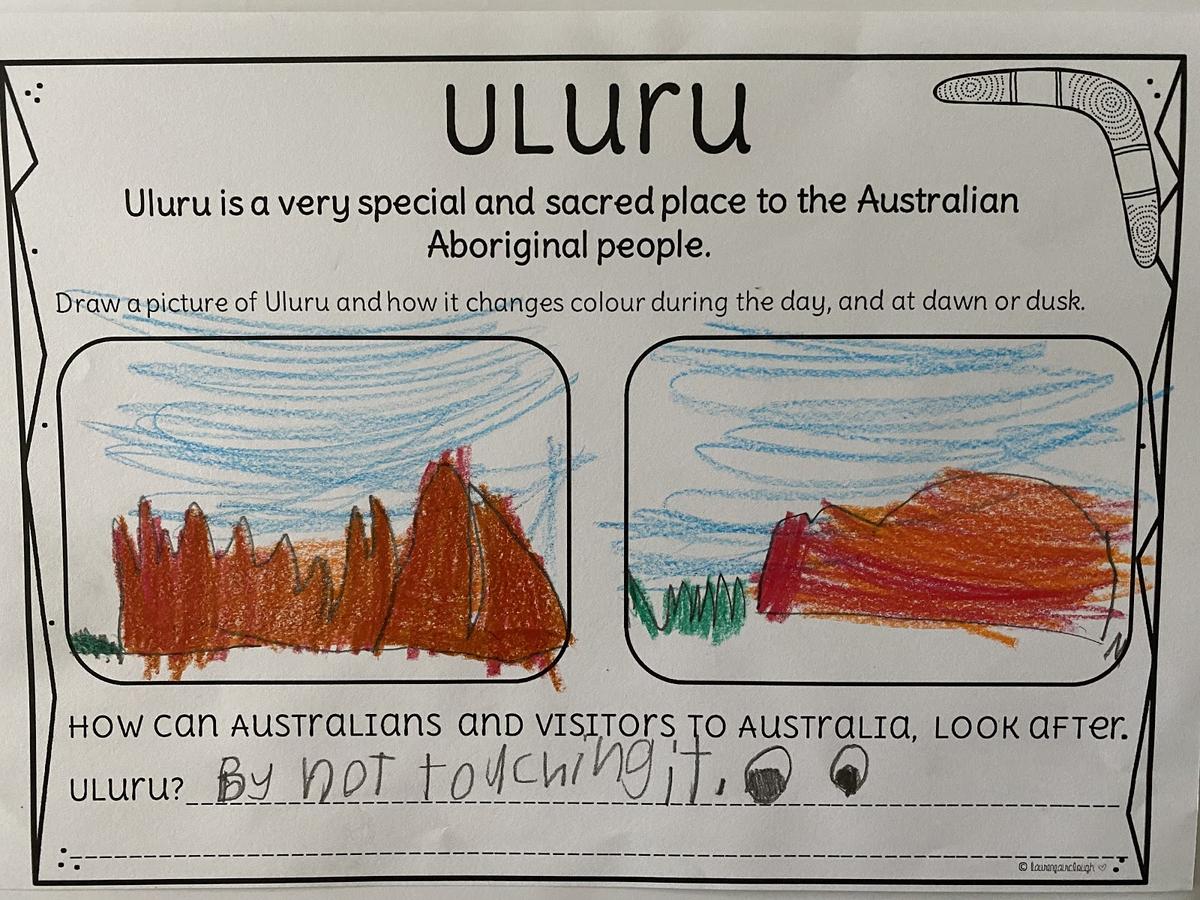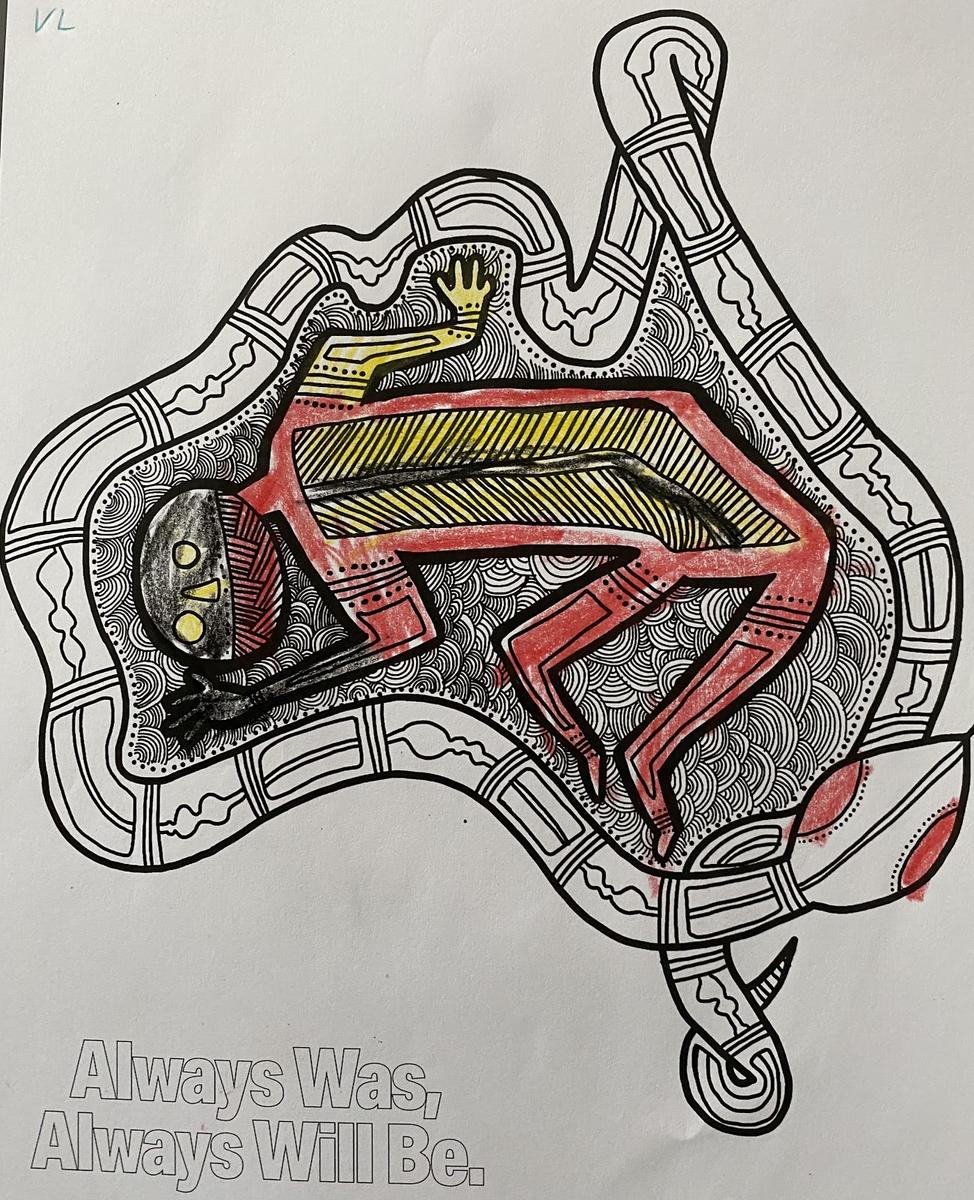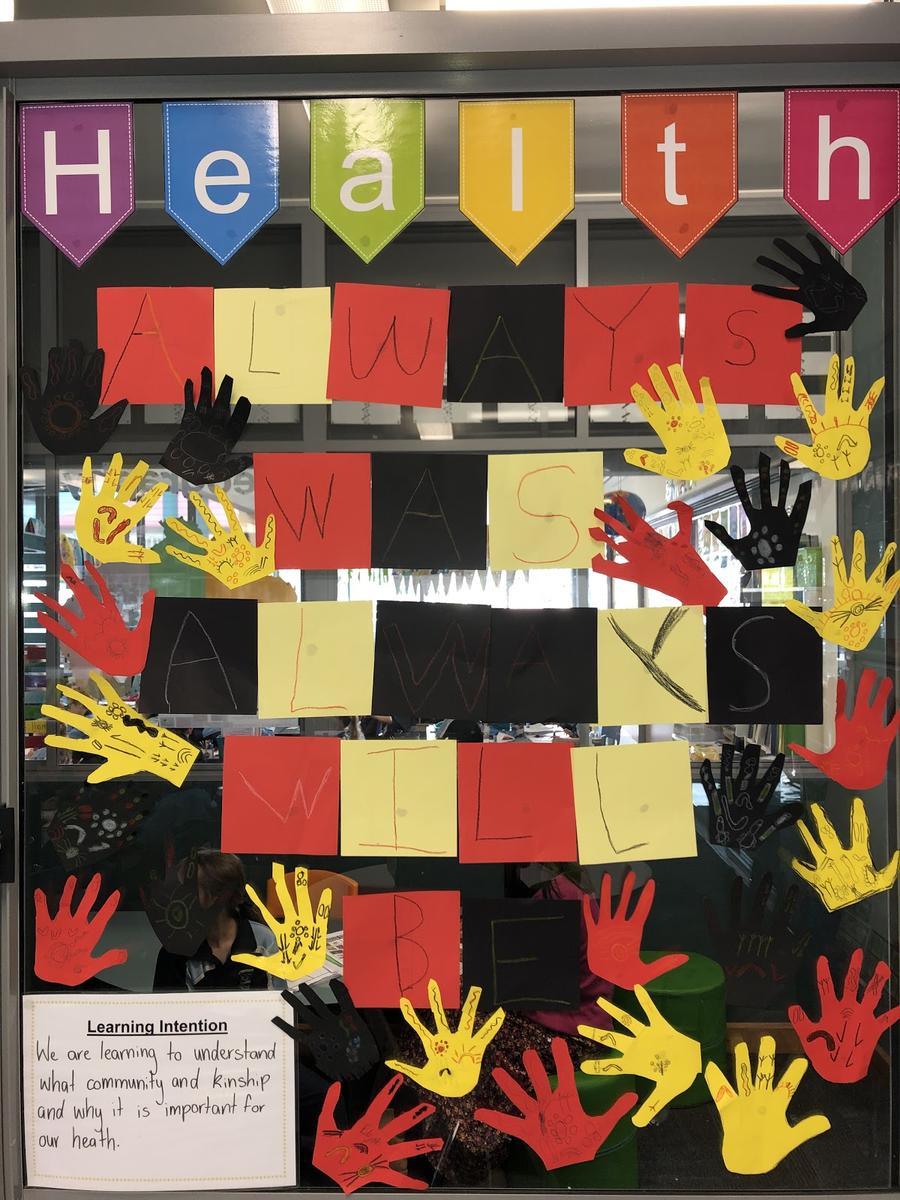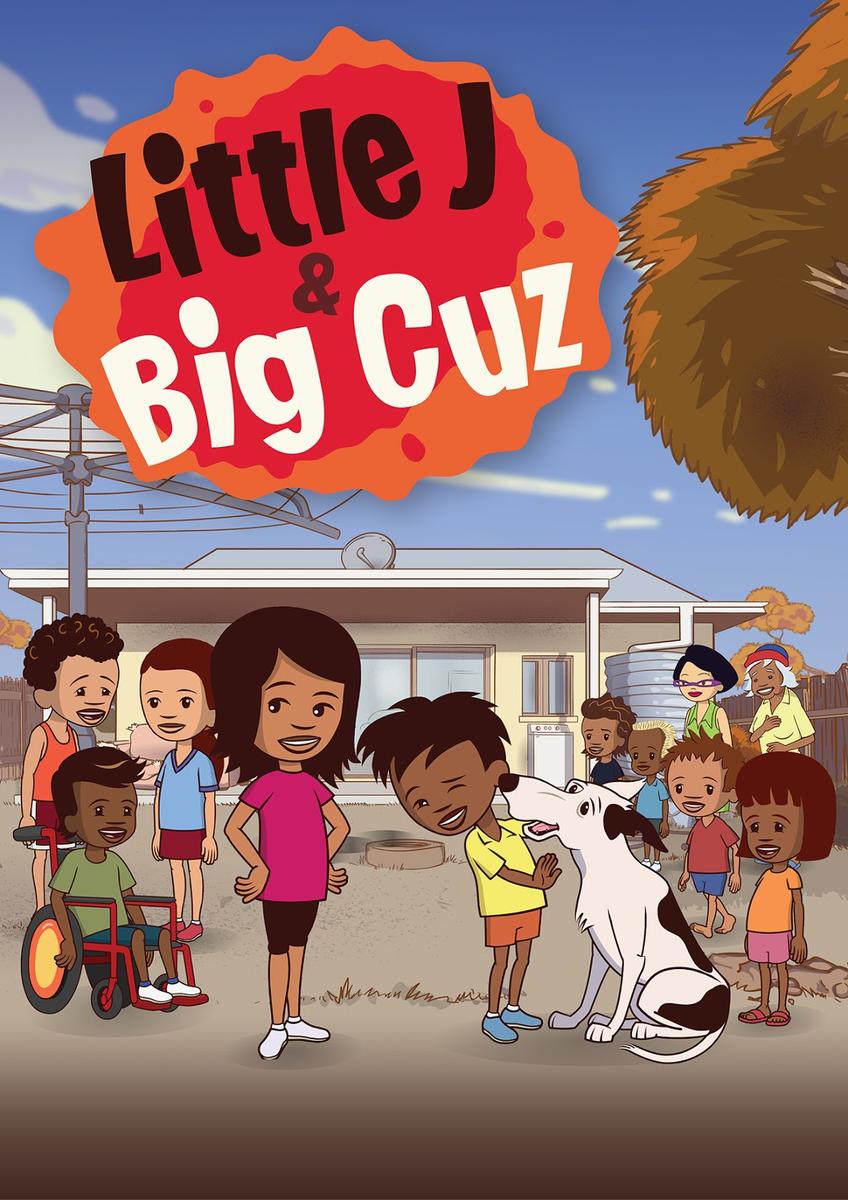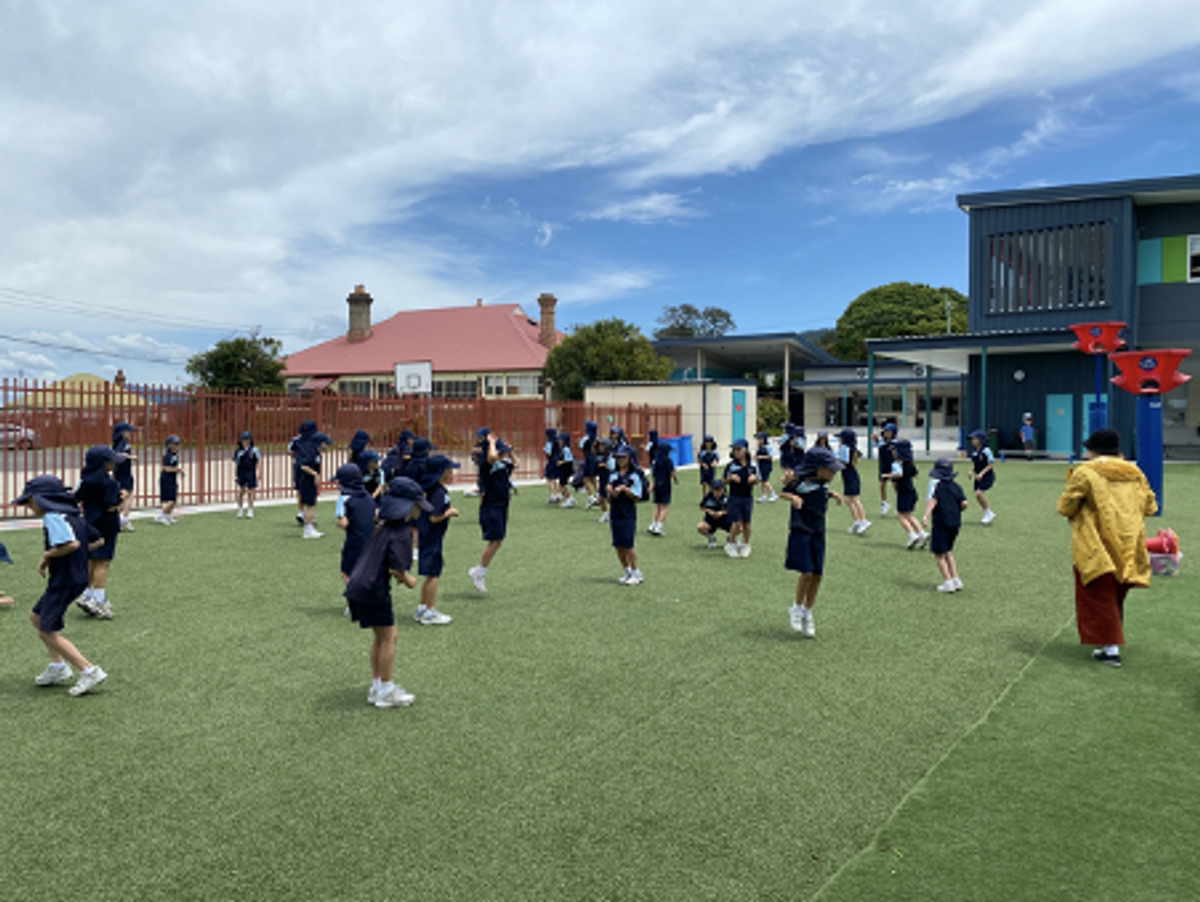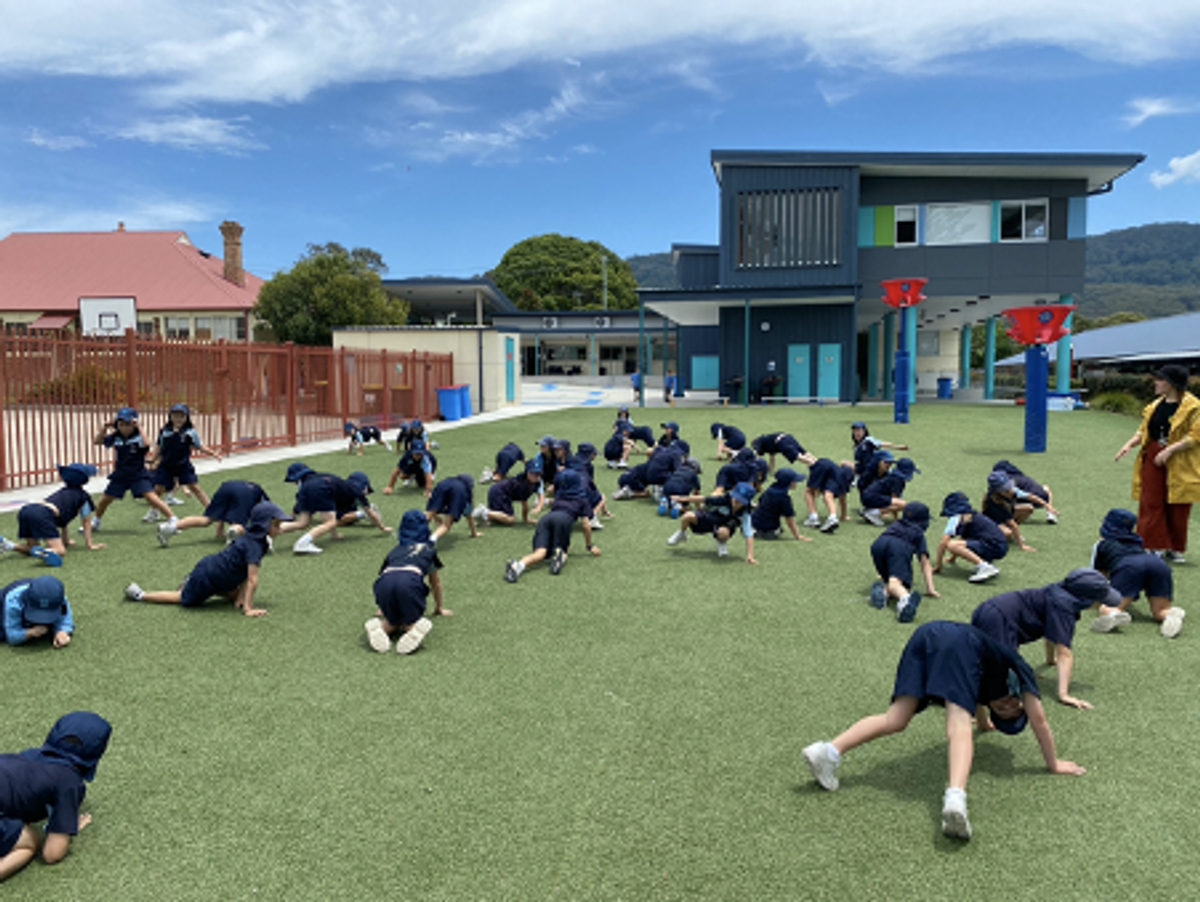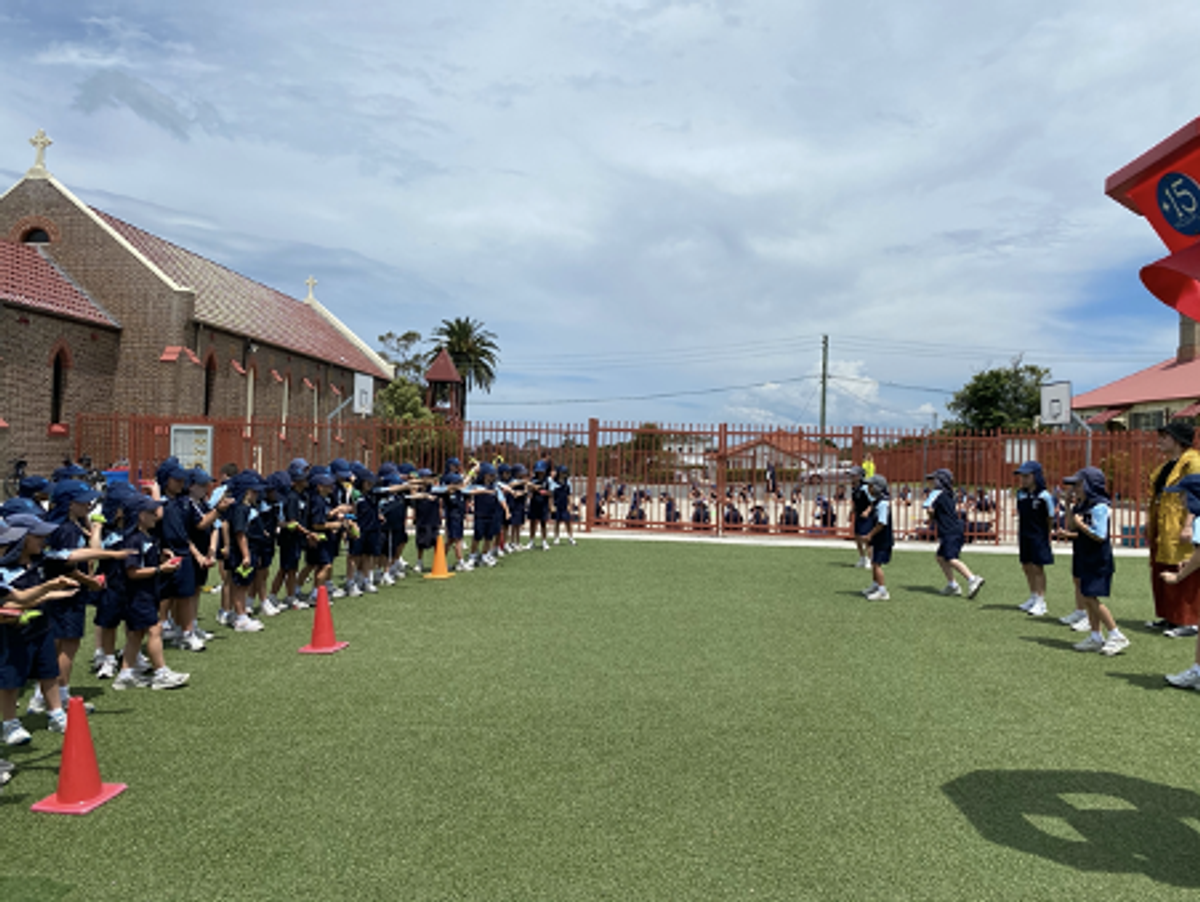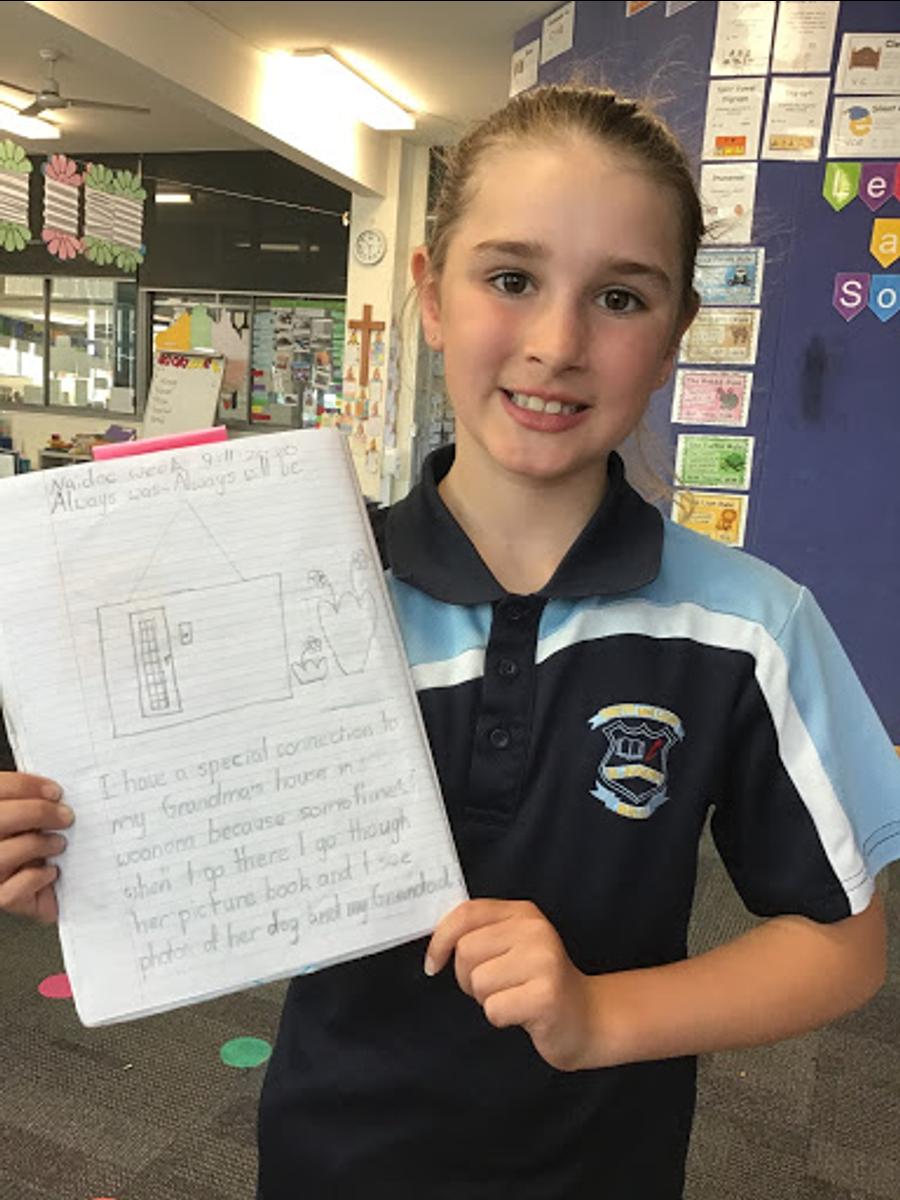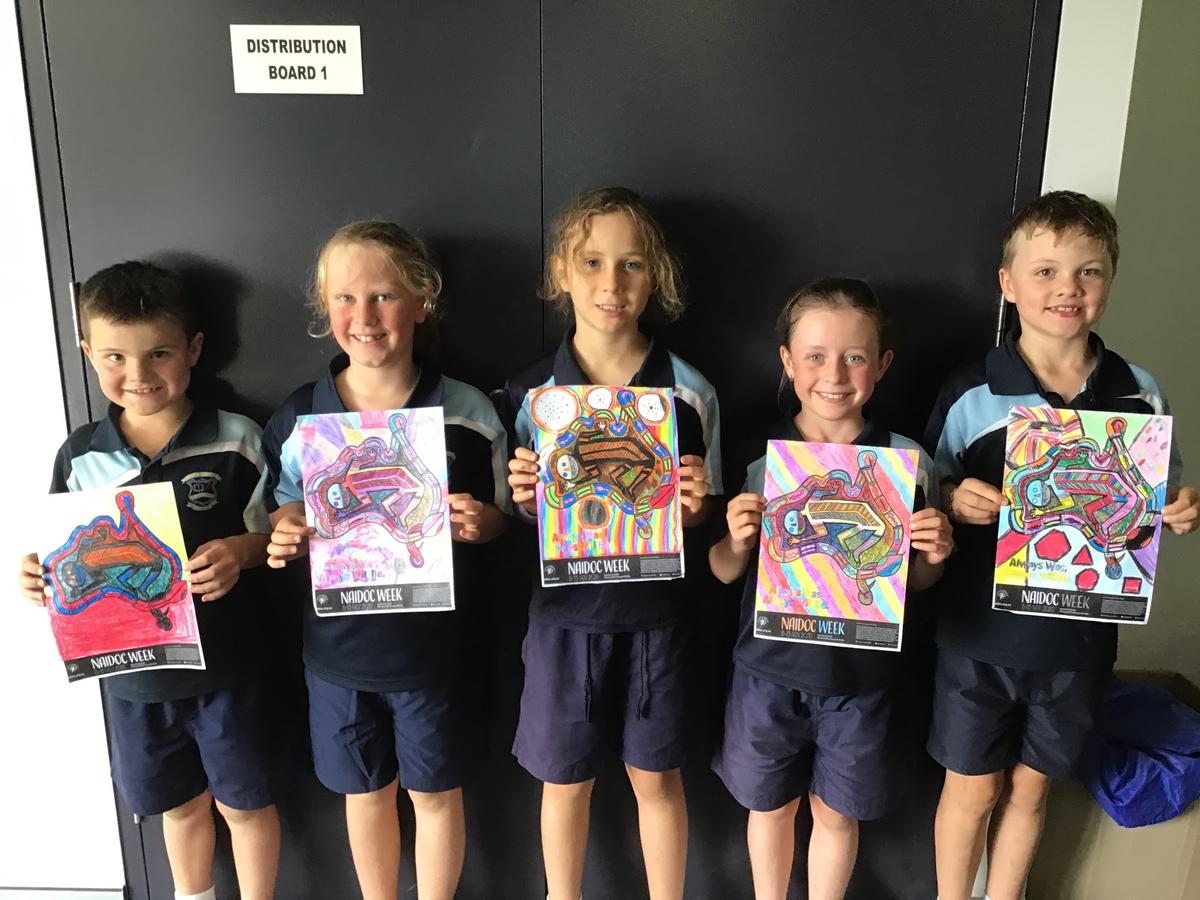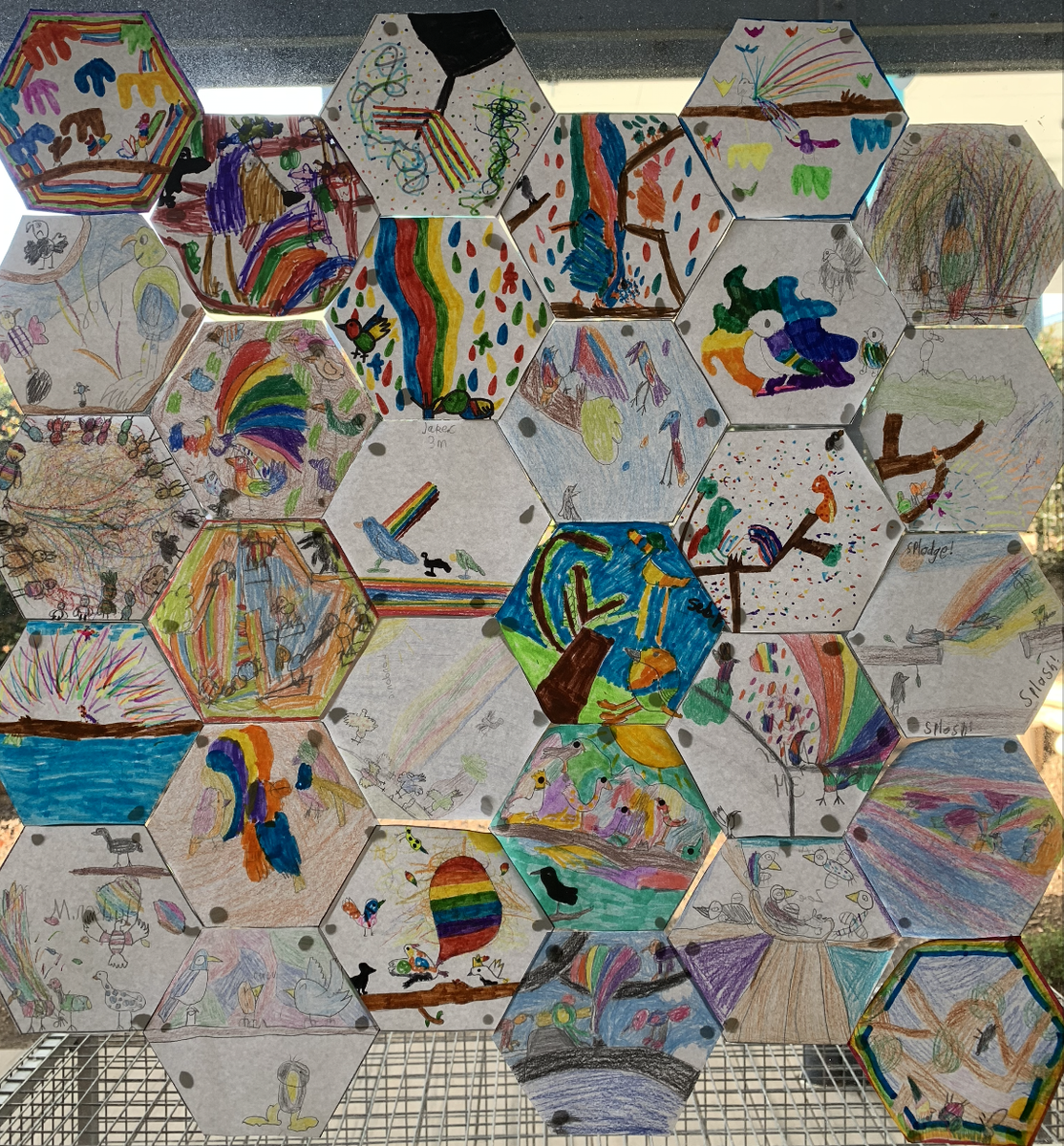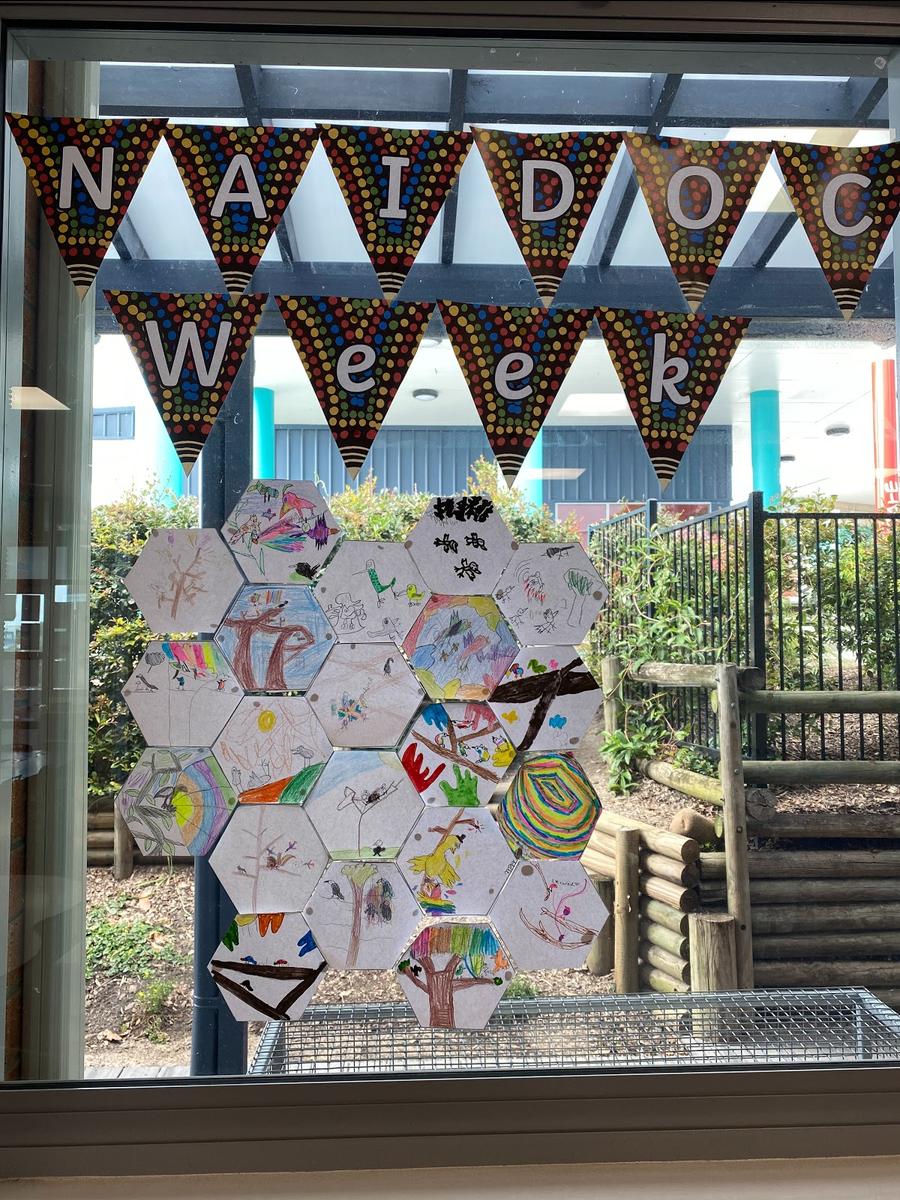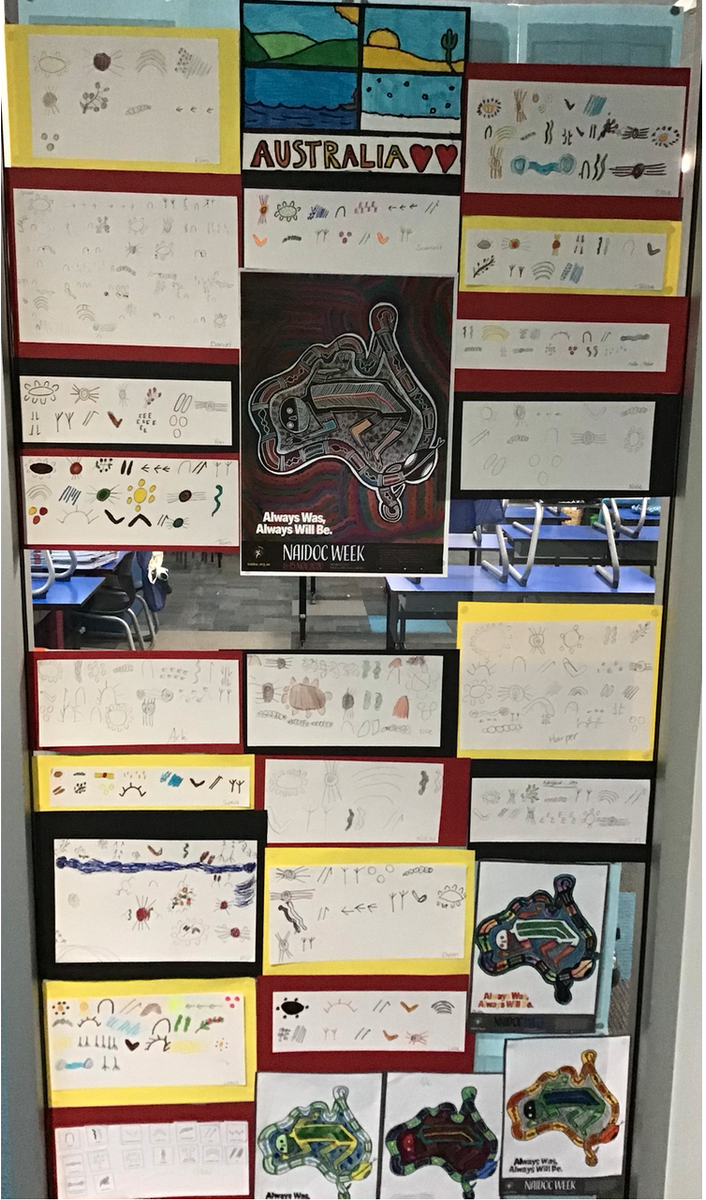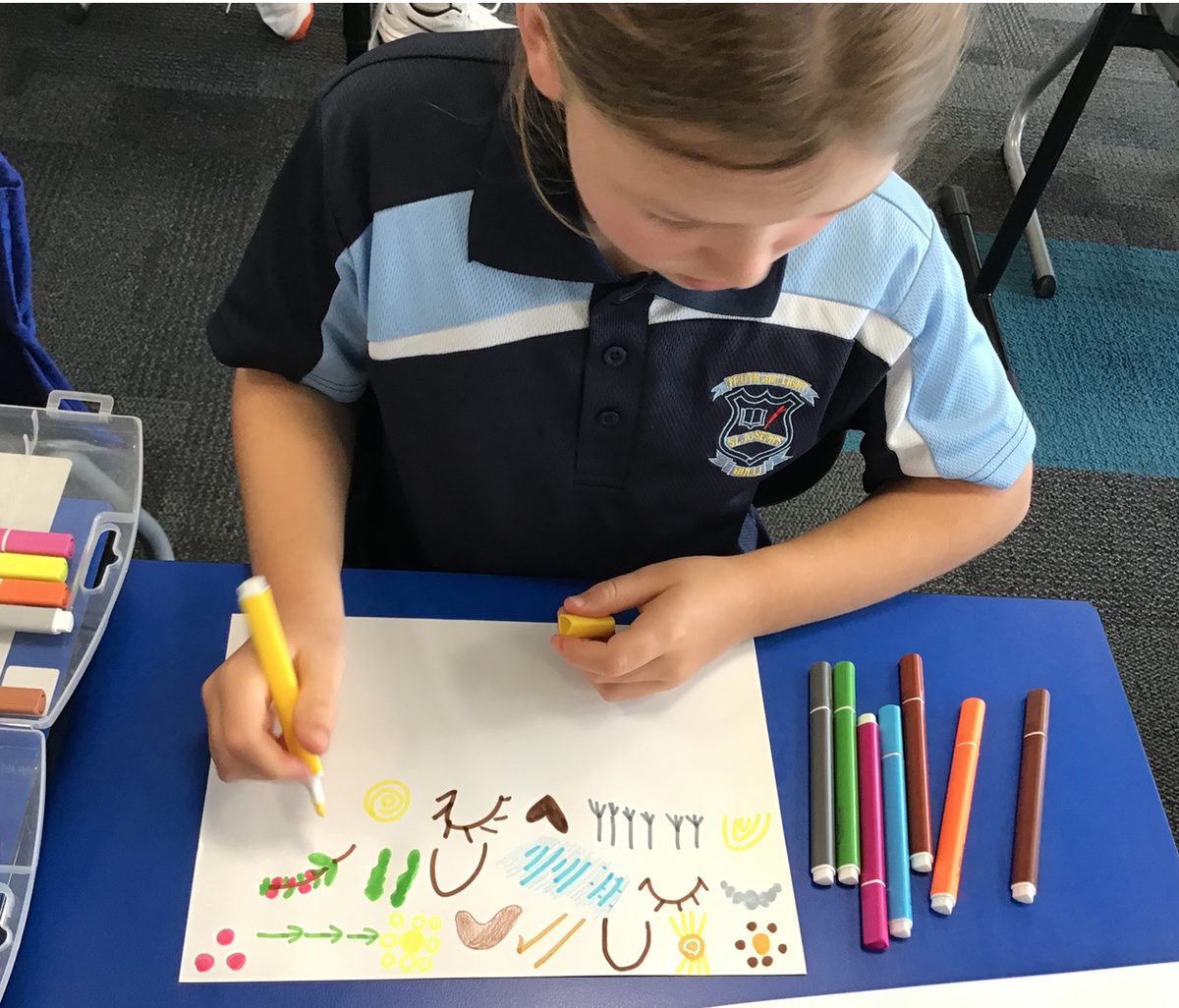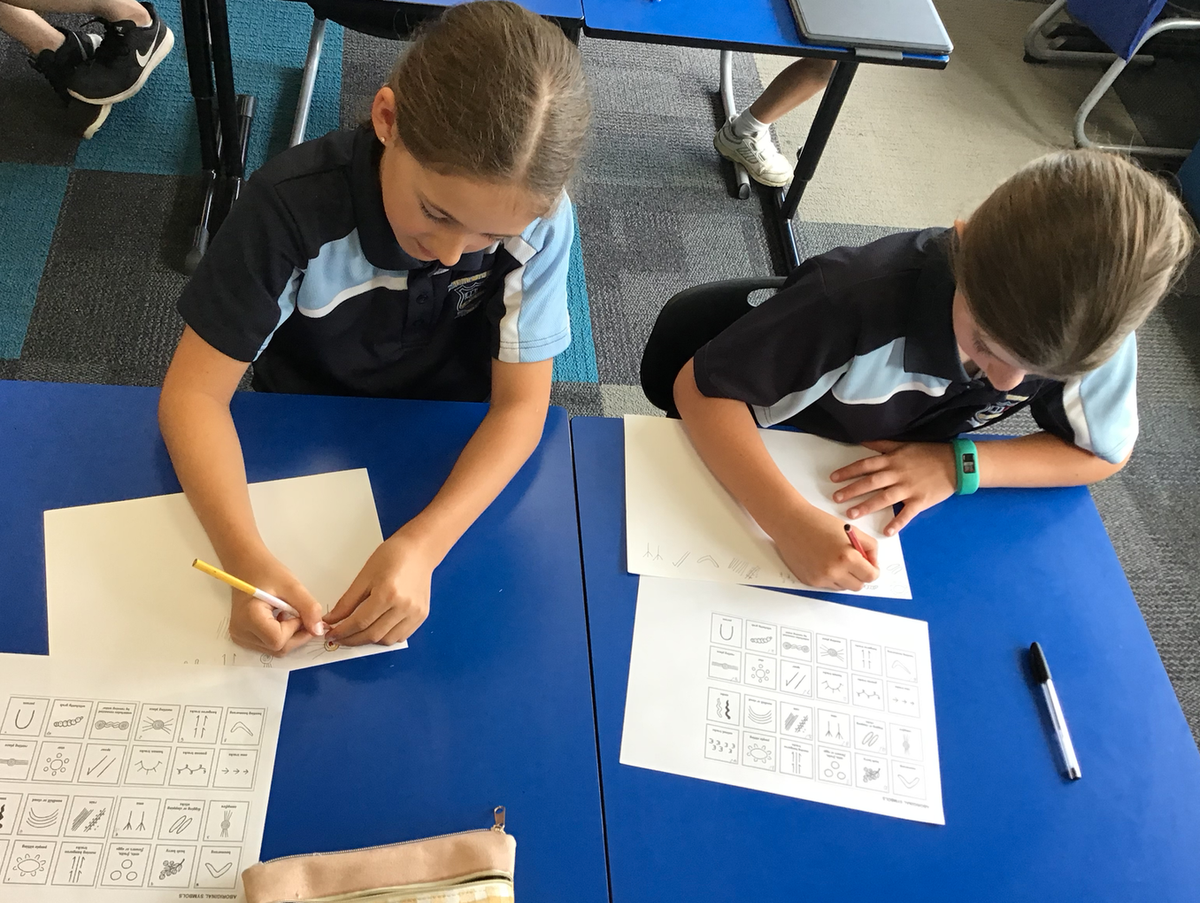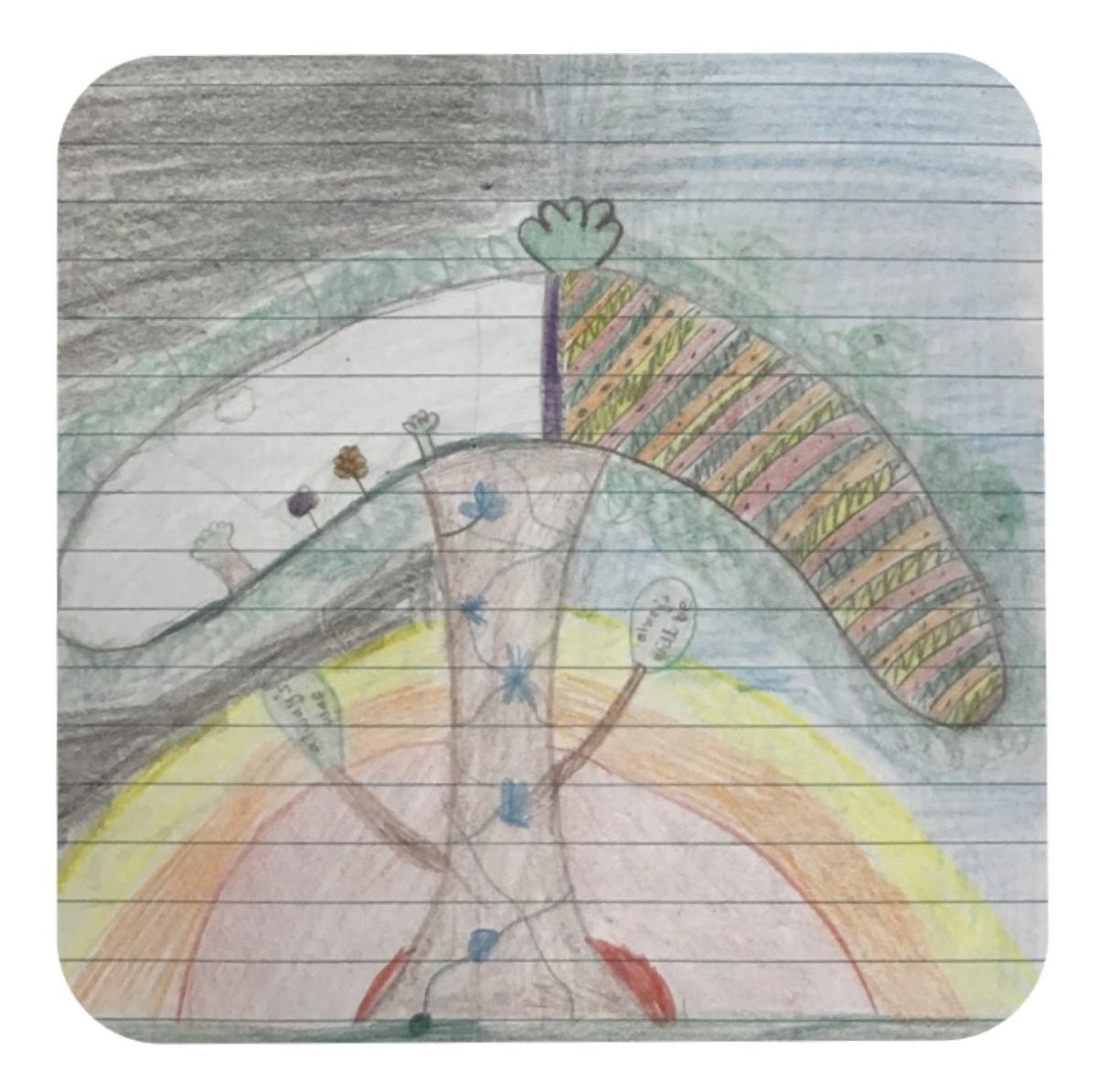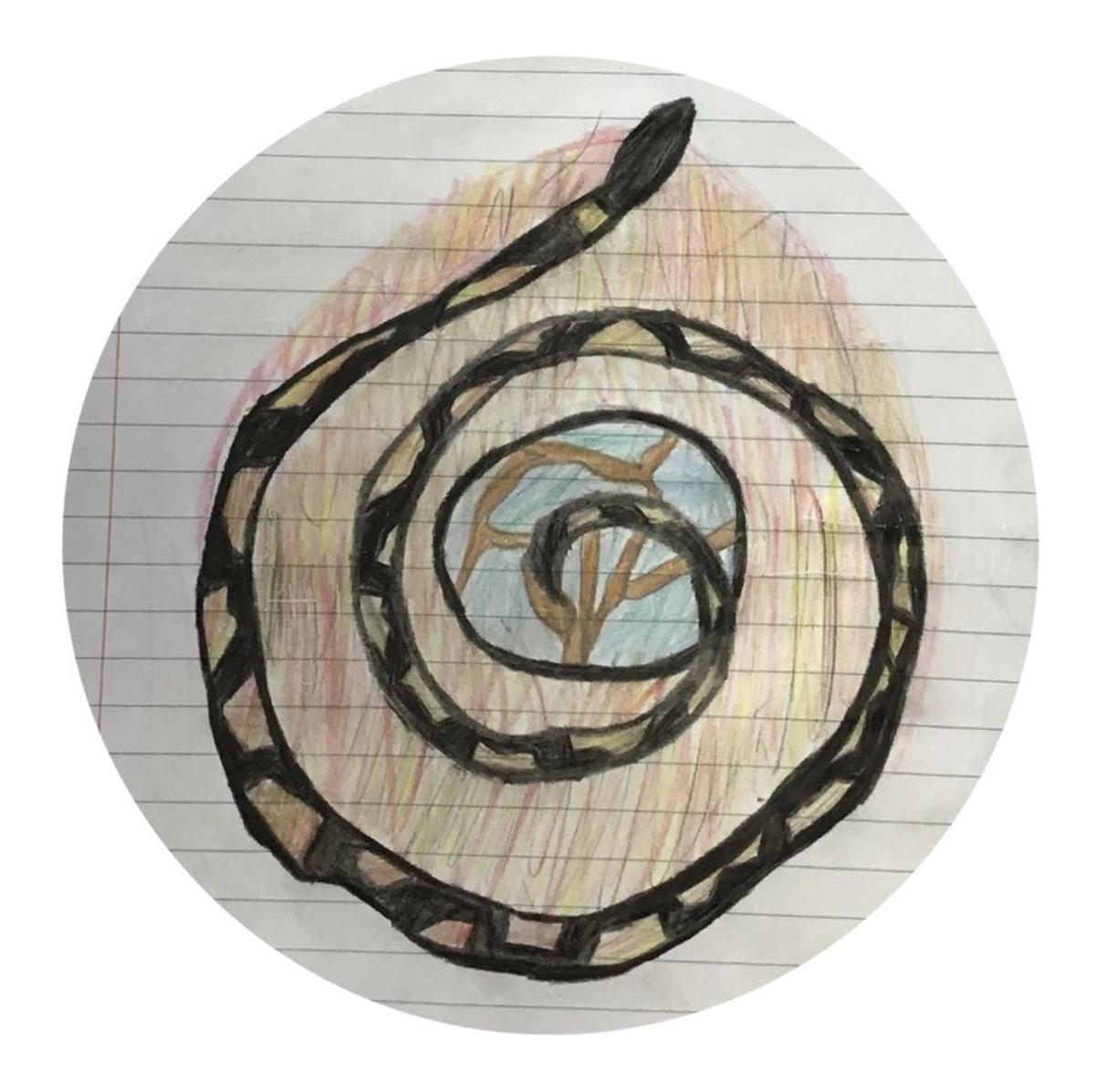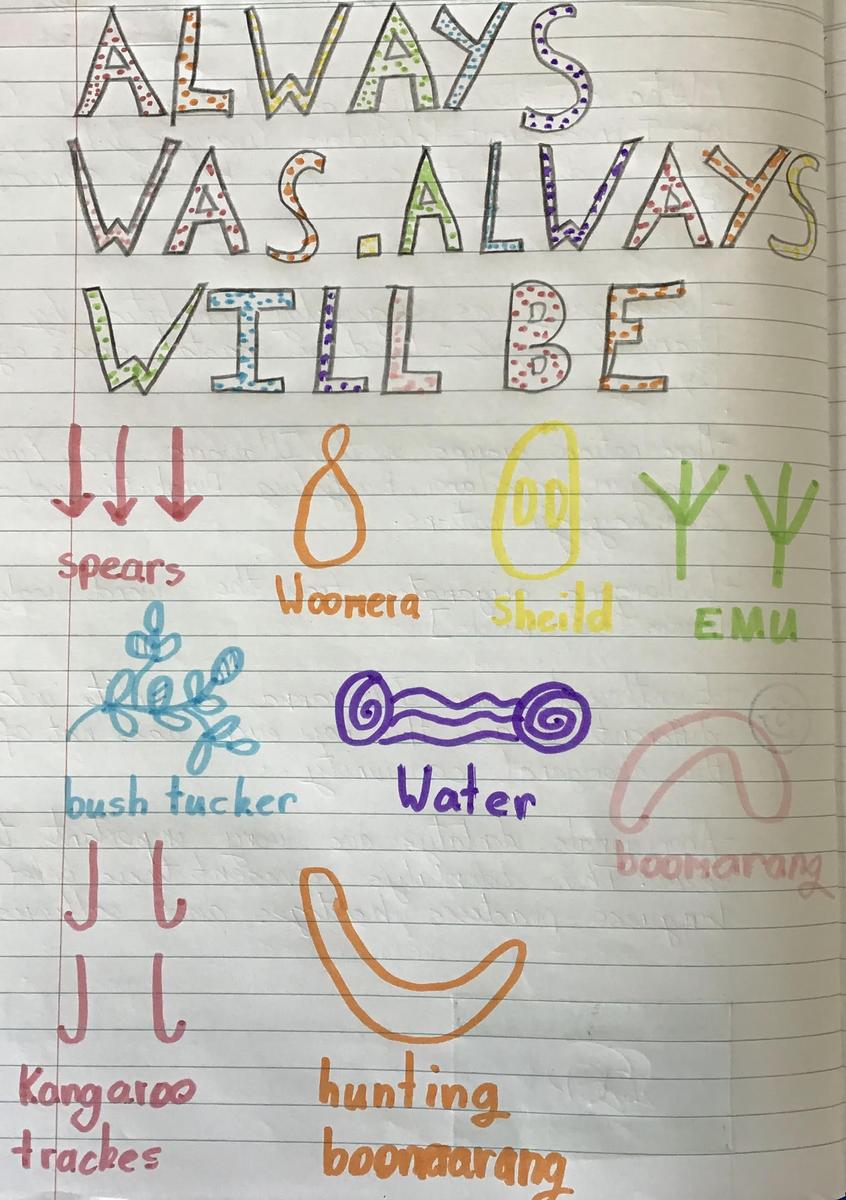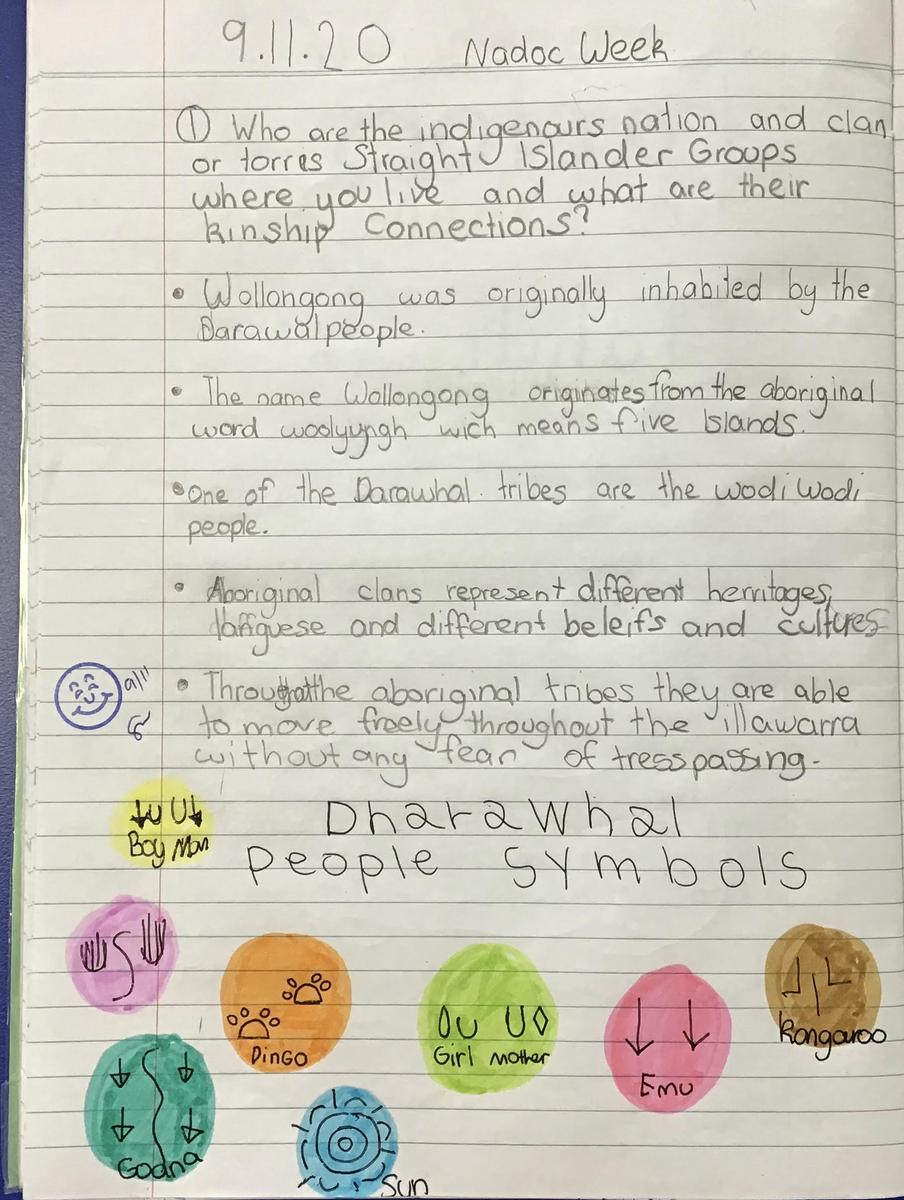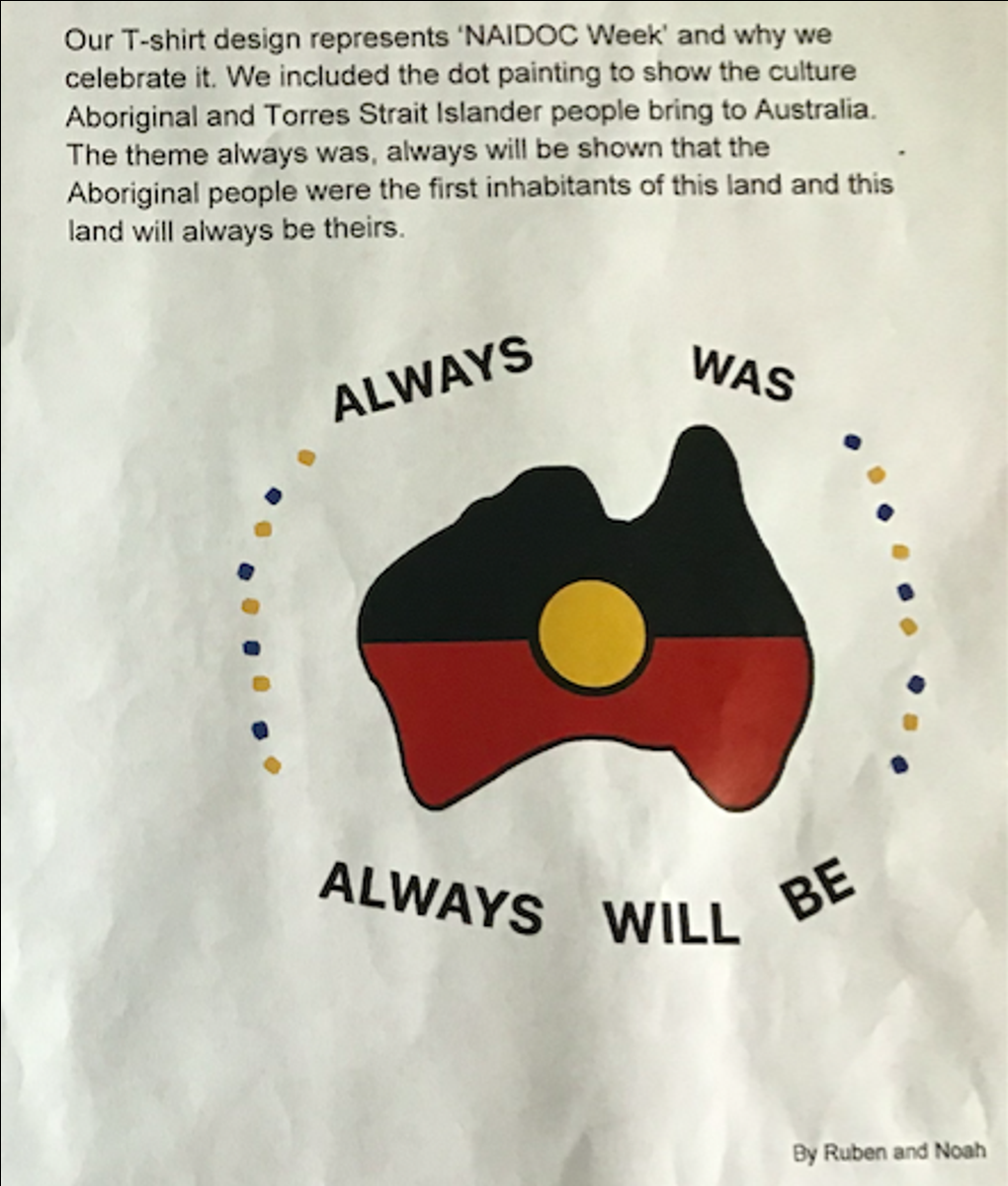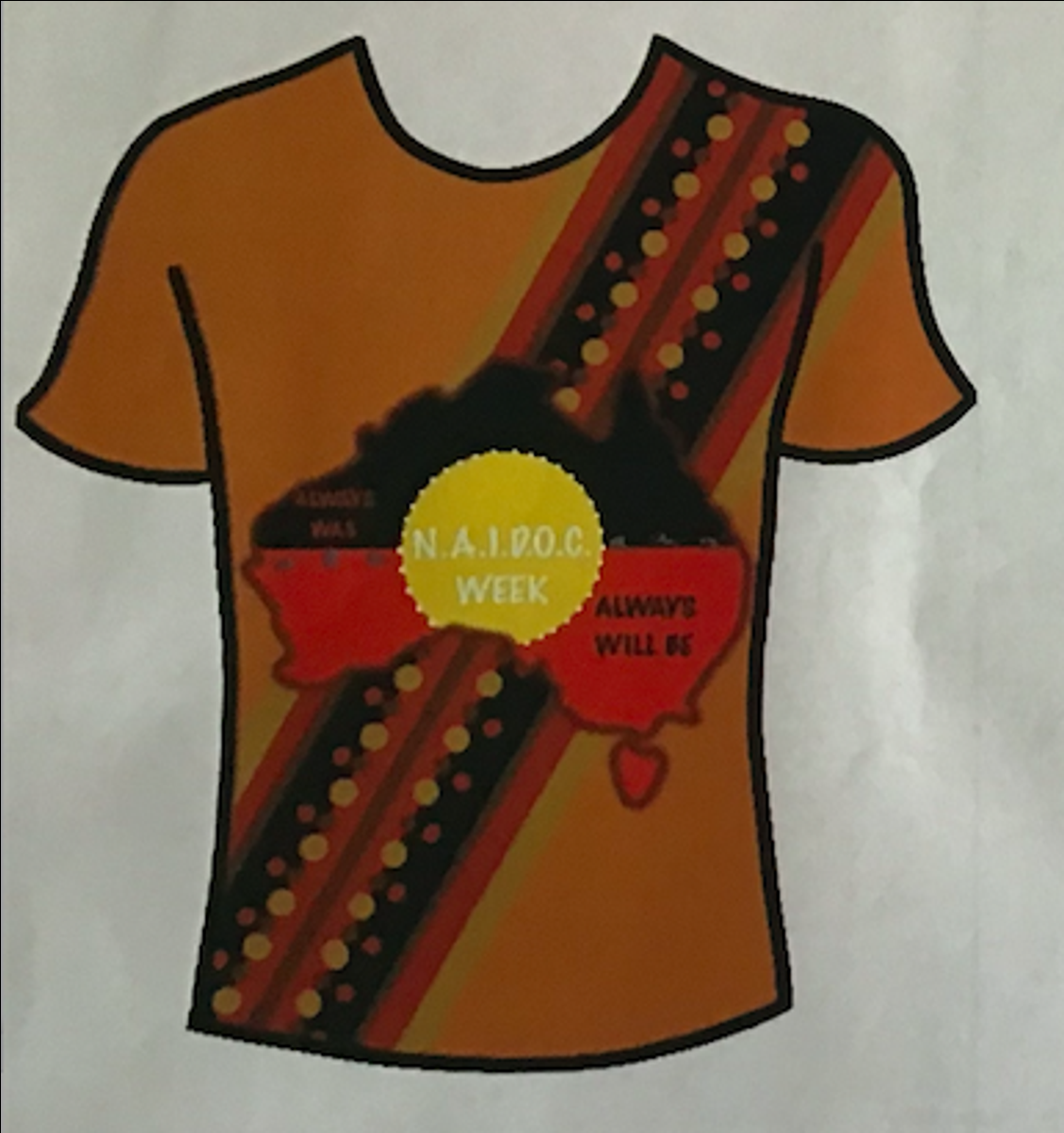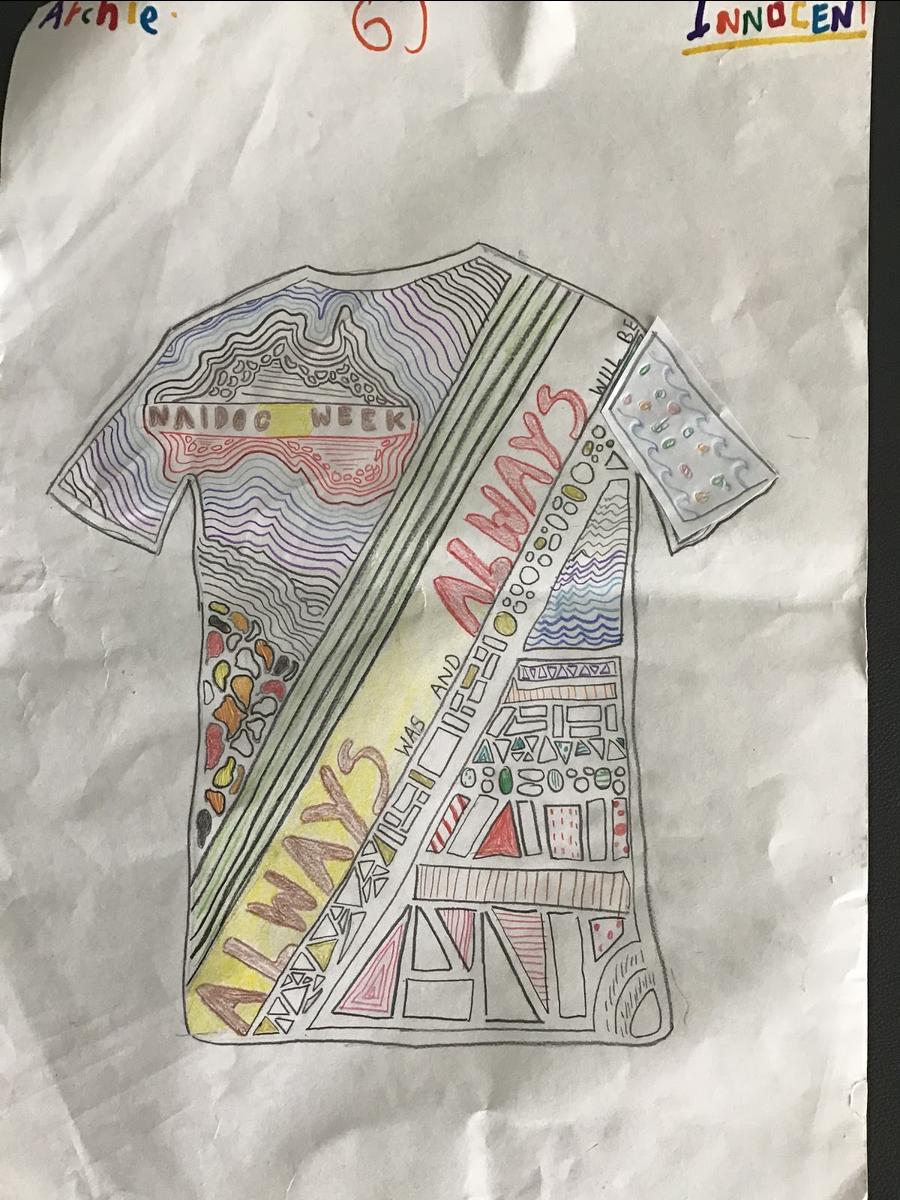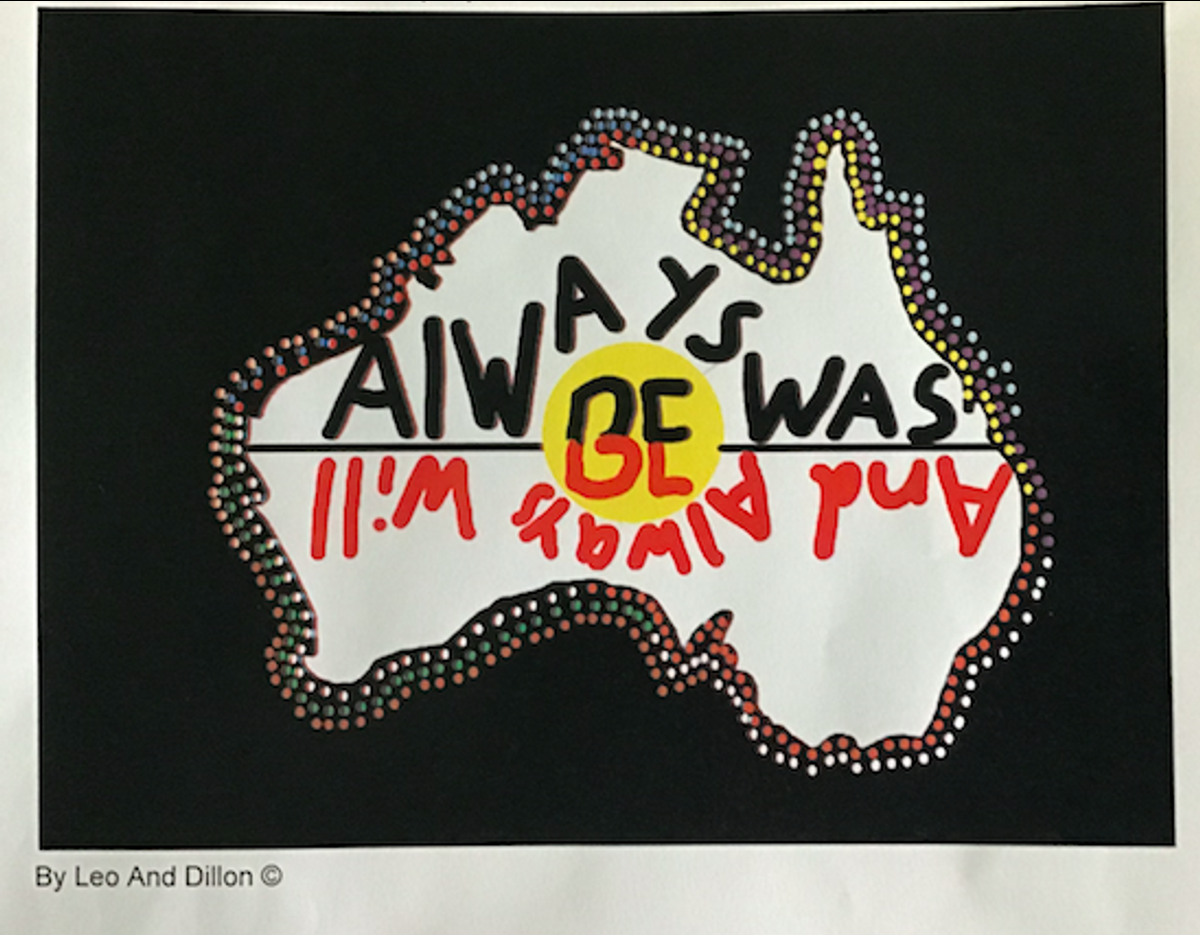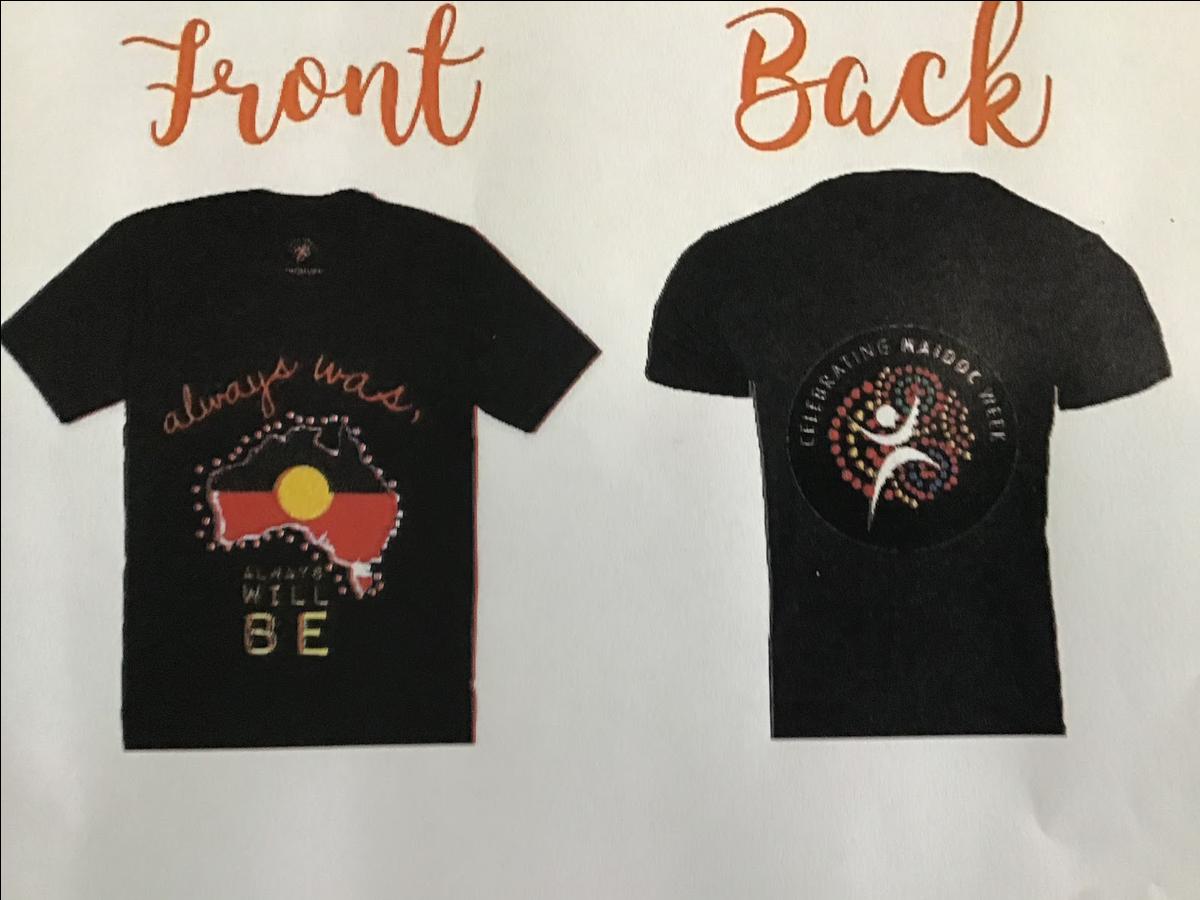NAIDOC Week

Always Was, Always Will Be
NAIDOC stands for National Aborigines and Islanders Day Observance Committee. Here is a snapshot of celebrations at St Joseph's.
KINDERGARTEN
In Geography, Kindergarten has been learning that places are significant to people for different reasons. We learned about the Aboriginal flag and some special Aboriginal places. We learned about the Dharawal people, who live in our local area. We learned that the word ‘Illawarra’ means a place by the sea.
During Naidoc Week we read the story My Weekend With Pop told in Dharawal. We also listened to the Australian anthem sung by a Shellharbour school student in Dharawal. We also coloured the ‘Always Was, Always Will Be’ poster using the colours from the Aboriginal flag.
YEAR 1
In 1M we learned the song and sit-down dance to ‘Taba Naba’ as performed by people from the Torres Strait Islands. The song is about getting in a small boat, floating over the reef.
We read the book Welcome to Country and discussed the Aboriginal peoples' connection to the land. It also sparked a conversation around Indigenous kinship as the author was Aunty Joy Murphy.
Students traced around their hands on yellow, black and red paper before decorating it with Aboriginal markings. These were then displayed with the words “Always was, always will be’’ in conjunction with the 2020 NAIDOC week theme.
In sport, we did a guided interpretive dance of Australian animals, as inspired by Aboriginal performances. We also played a game called Borna Jokee.
In 1J we spoke about the meaning of NAIDOC week. We watched a clip about how Aboriginal and Torres Strait Islander people were Australia’s first explorers, first navigators, first engineers, first farmers, first botanists, first scientists, first astronomers and first artists. We then coloured in the NAIDOC week poster.
We also watched an episode of ‘Little J and Big Cuz’.
During sport, we did a guided interpretive dance of Australian animals, as inspired by Aboriginal performances.
We then played a game called Borna Jokee. The game of Boorna Jokee was the throwing of blunted spears at a human target. In this manner, a player perfected skills in spear throwing and spear dodging. In displays of skill, some men could expertly dodge three spears thrown together. Don’t worry, we used bean bags!!!
YEAR 2
In 2M we watched a clip where young indigenous people spoke about their connections to the land. These young indigenous people shared their special places and what made them special. We then had an opportunity to write about a place that is special to us. We listened to the story called Brother Moon. We coloured in the NAIDOC week poster.
In 2J we spoke about the meaning of NAIDOC Week. We discussed traditional and indigenous Bush foods and explored indigenous understandings of the environment, plants and animals.
We then coloured in the NAIDOC Week poster and made a classroom display.
YEAR 3
In 3M, we researched and discussed the history of NAIDOC Week. We then looked at the Dreamtime story ‘How the Birds Got Their Colours’ and completed a visualising activity where we created a quilt display of what we visualised when the birds got their colours.
In 3J, we read the Dreamtime story ‘How the Birds got their Colours’. We read the story without looking at the pictures, and tried to visualise each part of the story in our heads. Then, we acted out the story to get a better picture of each part of the story. Students then recorded their visualisations of the story, which we added to our beautiful class display.
YEAR 4
In 4M, we listened to and discussed information about the importance of Naidoc Week. We looked at Aboriginal symbols and used these to create a story, discussing the significance of oral storytelling within indigenous cultures. The students recorded themselves telling their story using their iPad. We also created beautiful Aboriginal style colourings for display.
4J investigated the popular DreamTime story ‘How the Birds Got Their Colour’, designing a picture quilt using their visualising skills to accurately retell the key ideas. Students also had some time to complete a NAIDOC Week colouring, adding it all to our prayer wall!
YEAR 5
Year 5 investigated the theme for NAIDOC Week 2020- Always Was, Always Will Be. Here are some reflections.
YEAR 6
My T-shirt represents the theme of ‘Always Was, Always Will Be’. I have put a picture of Uluru to represent the land part of this theme, that the land always was the Aboriginals and always will be an important part of their culture. I have written this year’s theme on the T-shirt so that if people don’t already know it, they will if they see my T-shirt. I also have included the title, ‘Always was, always will be NAIDOC 2020’ around the Aboriginal flag, but the golden circle is a fist representing rights for the Aboriginal people.
By Aidan
For 2020 NAIDOC Week we decided to choose a black shirt to symbolise strength and fear, which is what the Aboriginal people have been living in this world. We chose the Aboriginal boomerang to give more detail to the shirt, and for how they worked hard every day to find food and get accessories. We put two people from different nations shaking hands to represent trust, belief, friendship, and a hope for reconciliation and a peaceful future.
By Henry, Brad and Ryan
